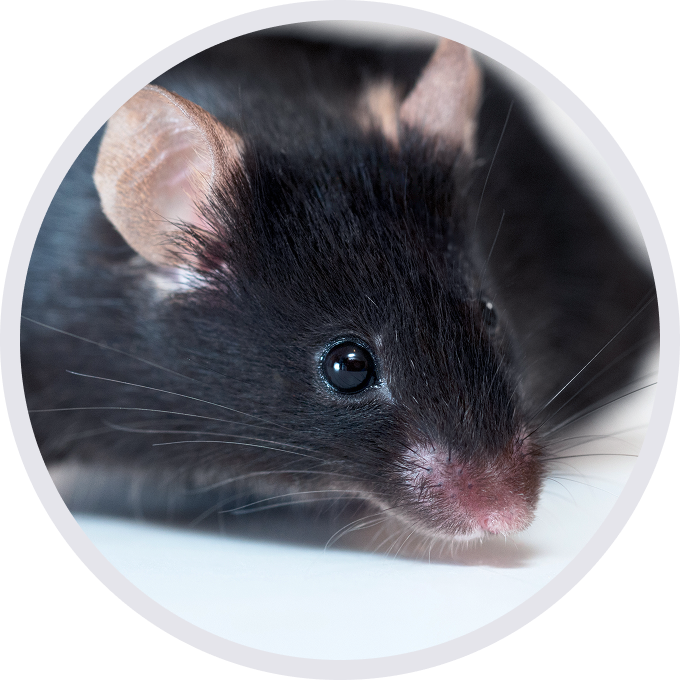
C57BL/6-Tnfsf8tm2(TNFSF8)Bcgen/Bcgen • 113224
Gene targeting strategy for B-hCD30L mice. The exons 1-4 of mouse Cd30l gene that encode extracellular domain were replaced by human counterparts in B-hCD30L mice. The genomic region of mouse Cd30l gene that encodes transmembrane domain and cytoplasmic portion was retained. The promoter and 5’UTR region of the mouse gene were also retained. The 3’UTR region of the mouse gene are replaced by human counterparts. The CD30L expression was driven by endogenous mouse Cd30l promoter, while mouse Cd30l gene transcription and translation will be disrupted.
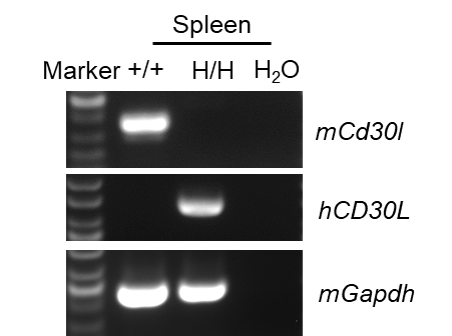
Species specific analysis of CD30L gene expression in wild-type C57BL/6JNifdc mice and homozygous humanized B-hCD30L mice by RT-PCR. Spleen was collected from wild-type C57BL/6JNifdc mice(+/+) and homozygous B-hCD30L mice(H/H). Mouse Cd30l mRNA was only detectable in wild-type C57BL/6JNifdc mice. Human CD30L mRNA was only detectable only in homozygous B-hCD30L mice, but not in wild-type C57BL/6JNidfc mice.
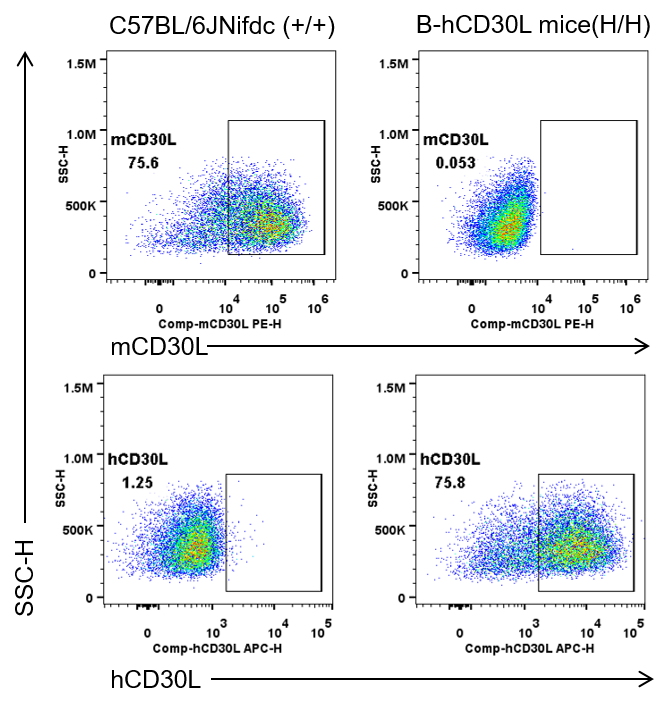
Strain specific CD30L expression analysis in wild-type C57BL/6JNifdc mice and homozygous humanized B-hCD30L mice by flow cytometry. Splenocytes were collected from wild-type C57BL/6JNifdc mice(+/+) and homozygous B-hCD30L mice(H/H). Splenocytes are incubated in a medium containing Cell Activation Cocktail (without Brefeldin A) (Biolegend, 423303) before analysis of CD30L surface expression on gated T cells. Protein expression was analyzed with anti-mouse CD30L antibody(Biolegend, 106405) and anti-human CD30L antibody(RD, FAB1028A) by flow cytometry. Mouse CD30L was exclusively detectable in wild-type C57BL/6JNifdc mice. Human CD30L was exclusively detectable in homozygous B-hCD30L mice, but not in wild-type C57BL/6JNifdc mice.
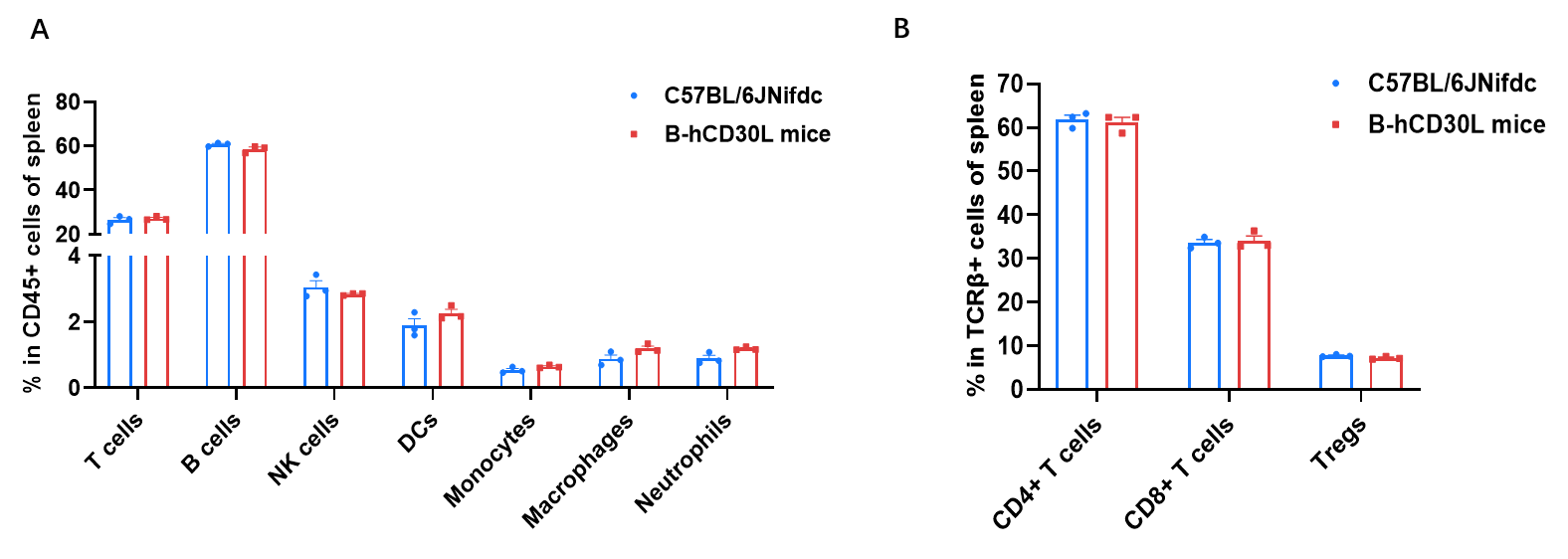
Frequency of leukocyte subpopulations in spleen by flow cytometry. Splenocytes were isolated from wild-type C57BL/6JNifdc mice and homozygous B-hCD30L mice (female, 6-week-old, n=3). A. Flow cytometry analysis of the splenocytes was performed to assess the frequency of leukocyte subpopulations. B. Frequency of T cell subpopulations. Frequencies of T cells, B cells, NK cells, DCs, neutrophils, monocytes, macrophages, CD4+ T cells, CD8+ T cells and Tregs in B-hCD30L mice were similar to those in C57BL/6JNifdc mice, demonstrating that humanization of CD30L does not change the frequency or distribution of these cell types in spleen. Values are expressed as mean ± SEM.
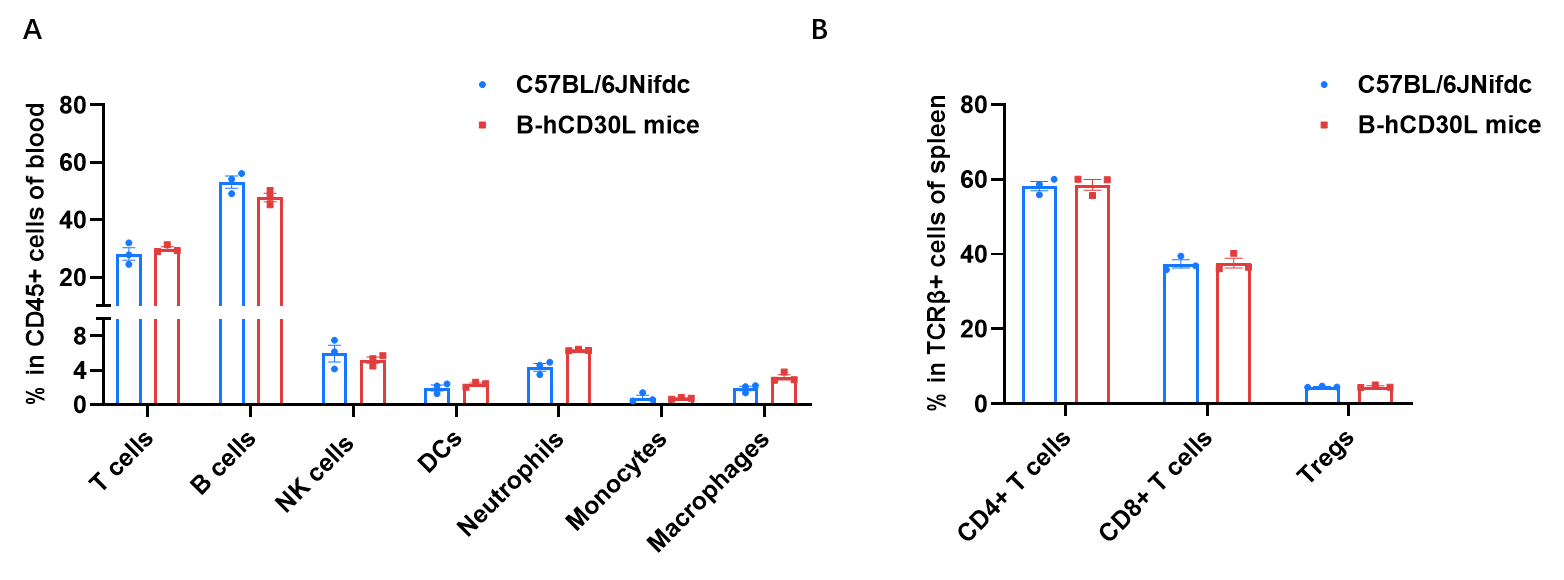
Frequency of leukocyte subpopulations in blood by flow cytometry. Blood cells were isolated from wild-type C57BL/6JNifdc mice (female, n=3, 6-week-old) and homozygous B-hCD30L mice (female, n=3, 6-week-old). A. Flow cytometry analysis of the blood cells was performed to assess the frequency of leukocyte subpopulations. B. Frequency of T cell subpopulations. Percentages of T cells, B cells, NK cells, dendritic cells, neutrophils, monocytes, macrophages, CD4+ T cells, CD8+ T cells and Tregs in B-hCD30L mice were similar to those in C57BL/6JNifdc mice, demonstrating that humanization of CD30L does not change the frequency or distribution of these cell types in blood. Values are expressed as mean ± SEM.
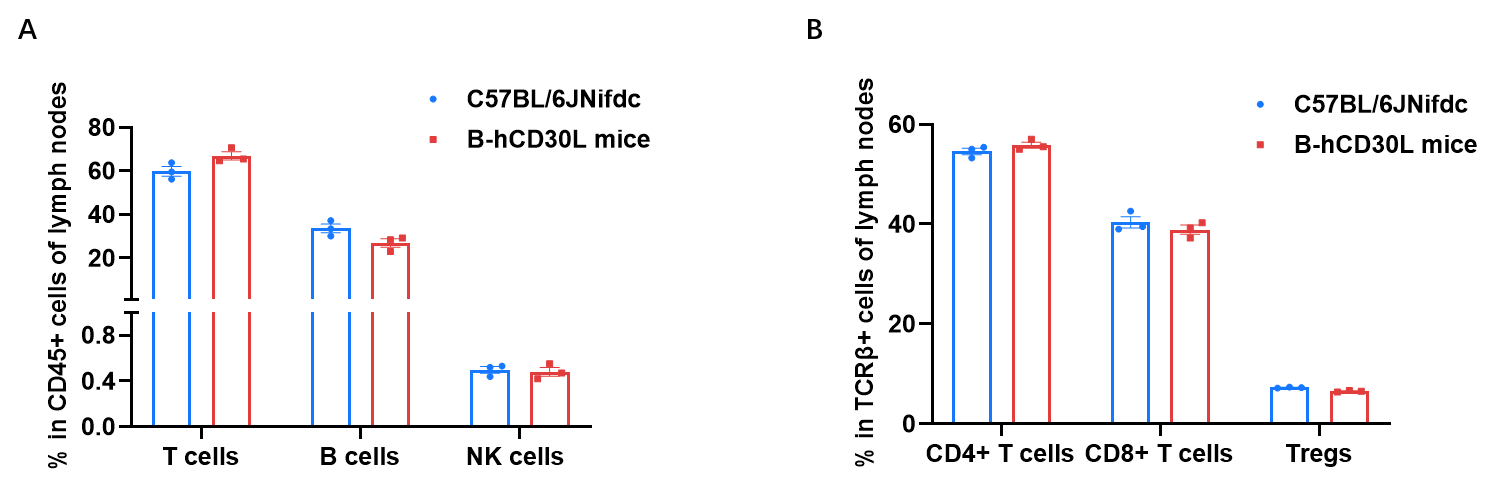
Frequency of leukocyte subpopulations in blood by flow cytometry. Lymph nodes cells were isolated from wild-type C57BL/6JNifdc mice (female, n=3, 6-week-old) and homozygous B-hCD30L mice (female, n=3, 6-week-old). A. Flow cytometry analysis of the lymph nodes cells was performed to assess the frequency of leukocyte subpopulations. B. Frequency of T cell subpopulations. Percentages of T cells, B cells, NK cells, CD4+ T cells, CD8+ T cells and Tregs in B-hCD30L mice were similar to those in C57BL/6JNifdc mice. Values are expressed as mean ± SEM.